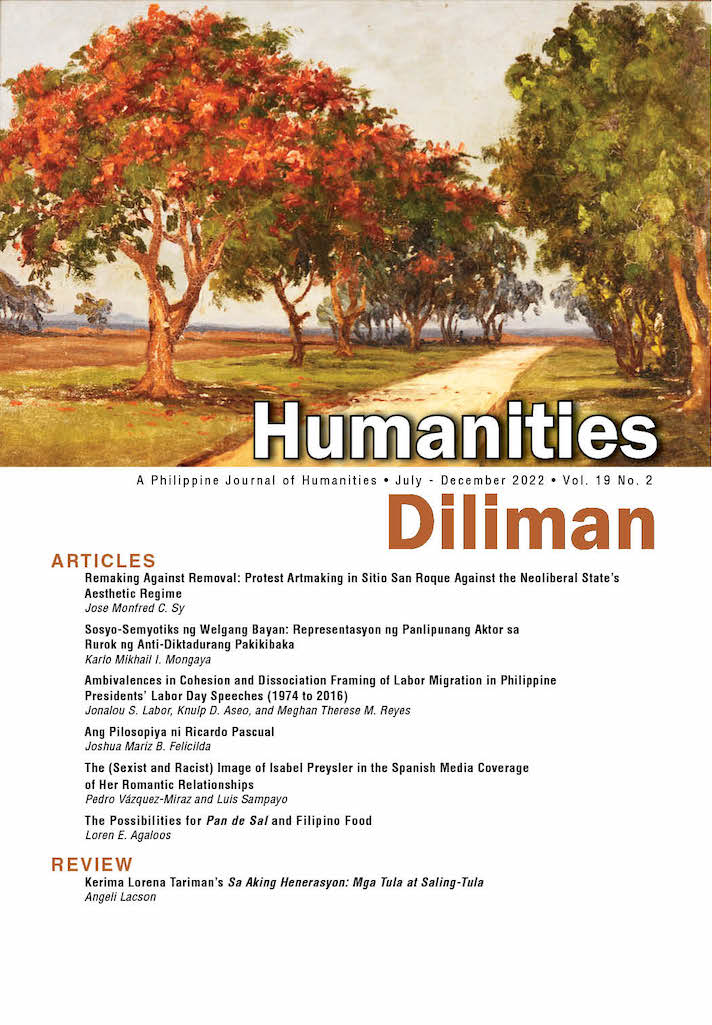The Possibilities for Pan de Sal and Filipino Food
Abstract
While rice is considered a staple on the Filipino table, the pan de sal (also written as pandesal, literally “bread of salt”) has not always shared the spotlight. Food historian Doreen Fernandez writes that “[i]t is brown and plain like the Filipino . . . It is good, basic, and strong—just the way we are, and would like the nation to be.” In this essay, I examine the pan de sal through cultural studies while considering the field’s overlapping concerns with food studies. Fabio Parasecoli’s comparison of food and cultural studies, alongside Warren Belasco’s take on food choices also contribute to my analysis of the pan de sal and its place in Philippine culinary history. This framework informs my discussion of two literary works, namely “The Bread of Salt,” a short story by N.V.M. Gonzalez and “Pan de Sal,” a poem by Gelacio Guillermo. The essay proposes wider considerations for how our food can be approached by way of the pan de sal, which can initiate readings that go beyond the usual dialogue of identity and authenticity in Filipino cuisine.


